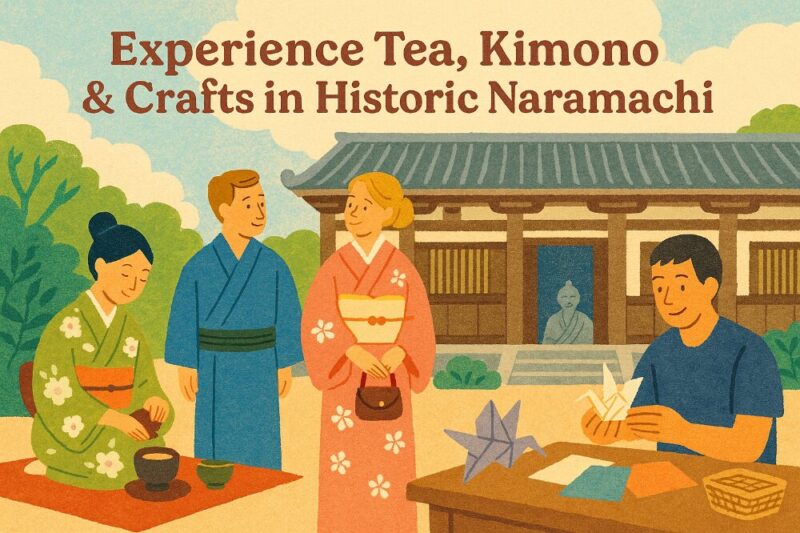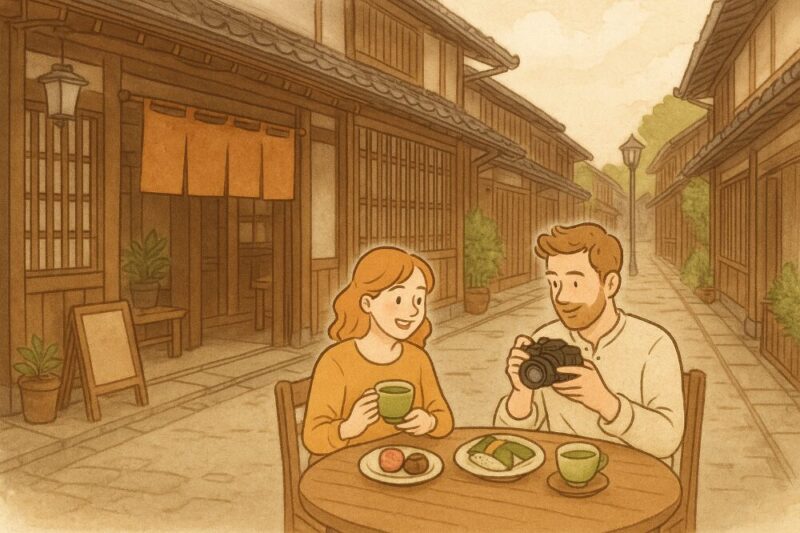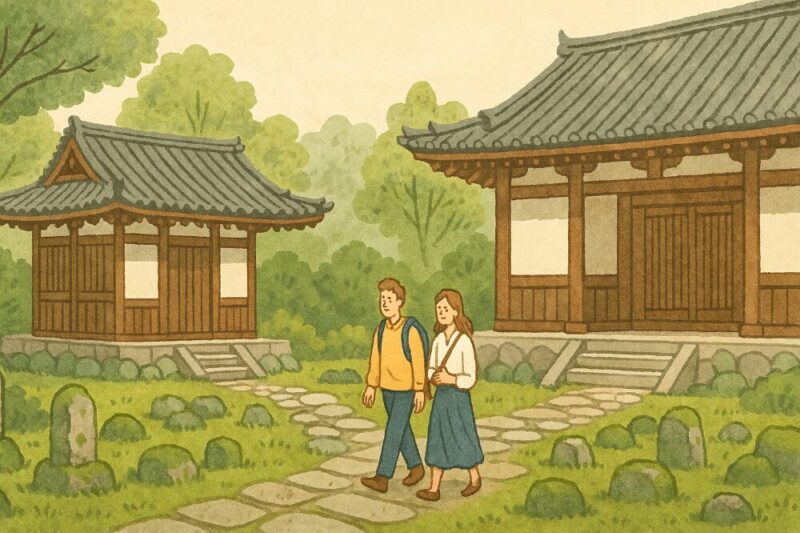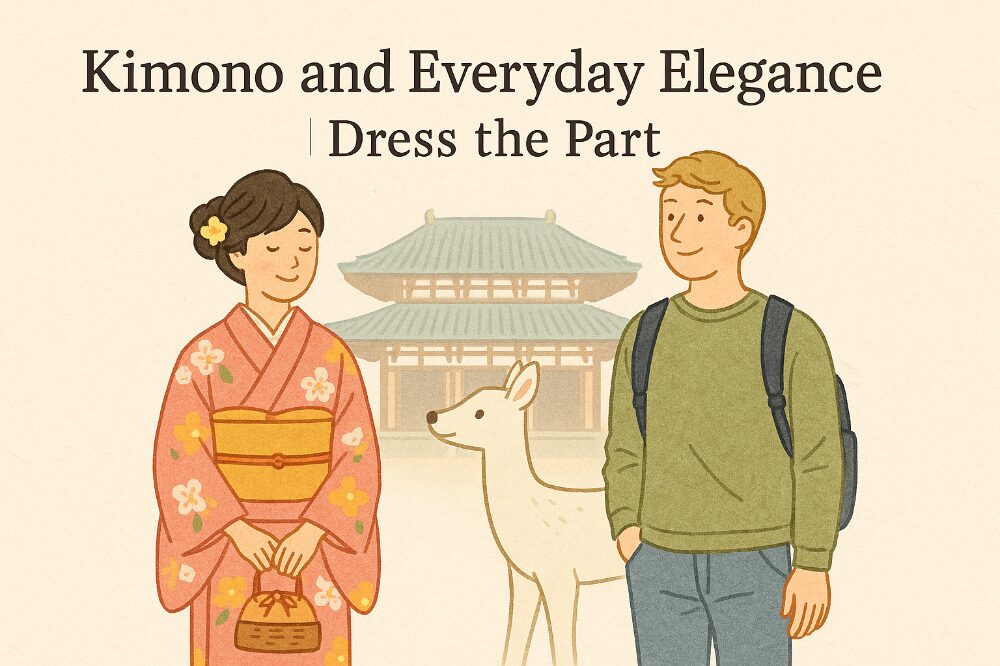
Introduction|Welcome to Cultural Naramachi

Tea and Tradition|Experience the Way of Tea
In the quiet heart of Naramachi, time slows as you step into a traditional tea room. The gentle scent of tatami, soft light filtering through shoji screens, and the graceful movements of the host draw you into a world of harmony. The tea ceremony is not simply about drinking matcha—it is a chance to pause, to breathe, and to share silence with others.
As the vivid green tea is whisked into a smooth froth, a delicate bowl, warm in your hands, is offered to you. A seasonal sweet, shaped like a flower or leaf, accompanies it, balancing the tea’s gentle bitterness with a touch of sweetness. Every gesture—from the turn of the bowl to a quiet bow of gratitude—carries centuries of tradition.
To experience tea in Naramachi is to glimpse the spirit of Japan itself: a beauty not found in grand displays, but in the quiet elegance of simple, mindful moments.
Calligraphy and Crafts|Hands-on Japanese Arts
In Naramachi, you can do more than admire Japanese art—you can try it yourself. Local studios and cultural centers offer calligraphy lessons, where friendly instructors show you how to hold the brush, use ink, and even write your name in kanji on traditional washi paper. It’s a simple but memorable way to connect with Japanese culture.
You can also join craft workshops, such as making washi paper goods, folding origami, or creating small handmade souvenirs. Many of these workshops are held inside restored townhouses, giving you the chance to experience both the craft and the atmosphere of old Nara.
Most places welcome beginners, and some offer explanations in English. A one- to two-hour session is enough to enjoy the experience and take home something you made yourself—a unique reminder of your time in Naramachi.
Kimono and Everyday Elegance|Dress the Part

One of the most memorable ways to enjoy Naramachi is to stroll through its narrow streets wearing a kimono or yukata. Local rental shops provide everything you need, from the garment itself to accessories and even dressing assistance, so no experience is required. Within minutes, you can be transformed into the elegant style of old Japan.
Walking through the preserved townhouses in kimono adds a new layer of charm to the experience. Wooden lattices, quiet alleys, and small shrines become perfect backdrops for photos that capture both tradition and beauty. Many visitors enjoy combining kimono rental with other activities—such as tea ceremony or calligraphy—for a deeper cultural connection.
Rental plans usually last a few hours to a full day, and some shops offer English support and advance reservations online. Whether you choose a colorful yukata in summer or a graceful silk kimono in cooler seasons, dressing the part allows you to step directly into the timeless elegance of Naramachi.
Naramachi’s Spiritual Side|Quiet Encounters with Faith

Amid the lively streets of Naramachi, you will also find places of deep calm. Gango-ji Temple, one of Japan’s oldest and a UNESCO World Heritage site, preserves the quiet atmosphere of early Buddhism. Its moss-covered stones and simple halls invite visitors to slow down and reflect.
Scattered throughout the district are small shrines and roadside statues, cared for by local residents. Pausing to bow or place a coin in the offering box offers a glimpse into everyday faith in Japan. Some temples and cultural centers even allow visitors to try shakyo, the meditative practice of hand-copying Buddhist sutras.
These encounters are not about grand ceremonies, but about the gentle rhythm of daily spirituality—an invitation to step aside from busy travel and share in a moment of peace.
Practical Information|Tips for Visitors
Naramachi is easy to reach and best enjoyed on foot. From Kintetsu Nara Station, it’s about a 15-minute walk, and from JR Nara Station, around 20 minutes. The streets are narrow, so comfortable shoes are highly recommended.
Many cultural experiences—such as tea ceremonies, calligraphy lessons, and wagashi workshops—require advance reservations, and some provide explanations in English. Booking online before your visit ensures a smoother experience.
While some shops and cafés accept credit cards, smaller workshops and family-run stores may be cash only, so carrying a few coins and small bills is useful. Opening hours can vary, and many places close one day a week, often on Mondays, so checking in advance is advised.
By planning just a little, you can enjoy Naramachi at a relaxed pace, discovering its traditions without stress.
Conclusion|Why Cultural Experiences Matter
Naramachi is not only a place to see but a place to join in. By whisking matcha, shaping a sweet, writing with a brush, or walking the streets in kimono, you step into traditions that have been passed down for centuries. These experiences are simple, yet they carry a quiet depth that photographs alone cannot capture.
Cultural encounters in Naramachi remind us that travel is more than moving from one sight to another—it is about connection. Connection to people, to traditions, and to the small, mindful moments that stay in memory long after the journey ends.


